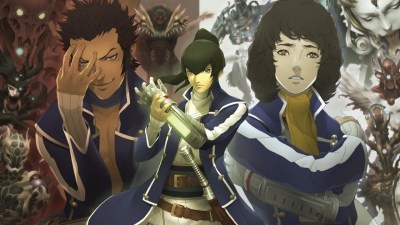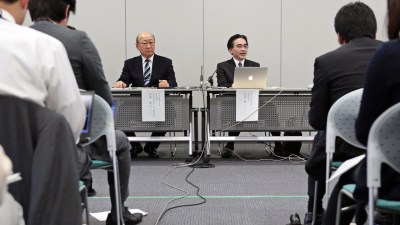Despite a massive marketing push, tie-in toys, comics, and even an animated TV show, Sega’s latest attempt to reinvent its mascot has been a dismal failure.
With combined sales of both Sonic Boom: Rise of Lyric on Wii U, and Sonic Boom: Shattered Crystals reaching only a combined total of 490k shipped to retailers, the publisher - once considered a driving force in the industry - has announced that it expects its end-of-year financials to result in an overall loss of around ¥113bn (around $109.3m, or £71m). This is a drastic downturn from its results from the previous financial year, which saw the company enjoying an increase in revenue of around 45%.
While the blame for this financial underperformance can’t be pinned squarely on the woeful critical and retail reception of the latest Sonic titles - its Pachinko business (a popular Japanese game which essentially combines pinball with penny-drop arcade machines, think along the lines of Peggle) has seen a 28% decline in revenue - it nonetheless remains a damning indictment of the company’s record.
Sega has long struggled to keep the Sonic brand relevant since the transition to 3D gaming in the mid 90s. While the series debuted strong in 1991 with the Mega Drive original (15m sold), every subsequent title has seen diminishing returns. In fact, despite being regarded by many as a sequel superior to the original, Sonic the Hedgehog 2 sold 6m copies - 9 million less than its predecessor.
This hasn’t been helped by high-profile mis-steps such as the 2006 title Sonic The Hedgehog, and a string of ill-received disasters like Sonic Unleashed and Sonic: Lost World. Titles like the well-received Sonic Generations and Sonic Colors restored some hope, but Sega has long appeared to be unsure about how to treat their mascot in the third dimension. Where the be-sneakered blue one was once seen as a rival to Nintendo’s plump plumber, he’s now seen as little more than a relic, with his most successful appearances in recent years actually coming from games developed by the publisher’s former industry rival.
Over the last few years, Sega has sought to expand its portfolio, notably by acquiring well-respected development studios like The Creative Assembly - who delivered the impressive Alien: Isolation late last year, which went on to win a number of awards. Creative Assembly is also, of course, the studio behind the long-running - and phenomenally popular - Total War series, with the latest entry in that series, Total War: Atilla, due out next week. But despite selling an impressive 1.76m copies, Isolation managed to do little to mitigate the disaster of Sega’s latest attempt to keep its blue-spiked mascot relevant.
Meanwhile, Sega recently announced a number of layoffs, aimed at streamlining its focus towards the growing lure of the mobile market - a move which was met with no small degree of scepticism from gamers, critics and industry analysts. There’s no doubt that the mobile gaming sector is profitable - one only has to look at the likes of Clash of Clans and Puzzle and Dragons, plus the rise of mobile gaming amongst Japanese gamers to see that; but some have suggested that the decision may prove to be a bad one in the long term, pointing to an increasingly crowded market dominated by in-app purchases and clones of the most popular games.
With a cavalcade of disastrous games behind him, perhaps it’s time that the publisher just put Sonic out to pasture, instead of attempting to continually reinvent him with each passing game. Will Sega heed such advice? It seems unlikely; after all, it’s advice that’s been around for over a decade now. But one thing’s for sure - Sega needs to drastically re-think its approach to both its wider operations and how it treats a once-beloved icon.


